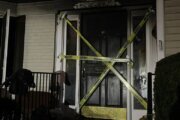The goal of cancer screening in people who have no symptoms is to catch cancer early, when it’s most treatable. Most screening recommendations for breast, cervical and colon cancer (the types of cancer for which there are widely used screening tests) are for people who are at average risk of developing these diseases. In contrast, only people with a history of heavy smoking, who are therefore at high risk, undergo lung cancer screening.
Lung cancer screening has become more common since the results of the National Lung Cancer Screening Trial, a randomized, multi-centered study, were published in the New England Journal of Medicine in 2011, says Dr. Edwin Jackson, a pulmonologist at the Ohio State University Comprehensive Cancer Center. The NLCST found that screening heavy smokers with low-dose helical CT scans was better than chest X-rays for finding early cancers.
“The conditions do not get any better for screening than for lung cancer,” says Dr. H. Gilbert Welch, a professor of medicine at the Dartmouth Institute for Health Policy & Clinical Practice. “Lung cancer is far and away the most common cause of cancer death in this country, more than the next four cancers combined. Screening works better if you find a group who is really at high risk for the disease.” Welch says this is easy with lung cancer. You find people who have a history of heavy smoking.
[See: 7 Things You Didn’t Know About Lung Cancer.]
Should You Be Screened?
Individuals between the ages of 55 and 77 who have a 30-pack year history of smoking and are current smokers, or have quit within the past 15 years, are eligible for annual CT scans for lung cancer screening. (To gauge pack years, multiply the number of packs of cigarettes you smoked daily by the number of years you smoked.) Even if you qualify for screening, however, it does not necessarily mean you should be screened.
“The more nuanced part [of the should-I-be-screened question] is can patients tolerate what a positive screening test will advise us to do?” Jackson says. In other words, is an individual able to undergo a biopsy or curative surgery if the screening test is positive? Individuals with other health conditions, such as advanced heart failure or COPD, may not be strong enough to tolerate surgery. For them, screening might not make sense.
This is where shared decision making comes in, Jackson says. “We talk to our patients about the risks and benefits of lung cancer screening. One of the risks will be the workup following a positive screening test [for example, a biopsy], which can cause more harm than good.” Another downside, he says, is the risk of developing a secondary cancer from annual screening with radiation.
Welch says lung cancer screening produces a lot of false positive results (about 25 percent of screens are positive). This means something that’s not cancer shows up on the scan. These findings may require additional procedures or more frequent imaging. Only about 1 in 25 positive screening results is actually cancer, Jackson says. The rest are usually harmless nodules. Another downside to screening, Welch says, is overdiagnosis, or finding cancers that never would have become symptomatic.
[See: What Not to Say to Someone With Lung Cancer.]
Does Lung Cancer Screening Save Lives?
Yes, but not as many as you might think. Jackson says the number of cancers doctors actually find with lung cancer screening is very low. Most people will either have a negative screen or a false positive. Therefore, the number of deaths prevented because of screening is also low. The NLCST found that people screened with low-dose helical CT had a 15 to 20 percent reduced risk of dying from lung cancer over seven years (17.6 deaths per 1,000 people screened with CT scan versus 20.7 deaths per 1,000 screened with a chest X-ray).
However, Jackson says, a side benefit of screening is that it provides an opportunity to offer evidenced-based therapies for smoking cessation. “One of the best ways to get out of the screening pool is to have stopped smoking for more than 15 years,” he says. “As you stop smoking, every year your risk of lung cancer goes down.” At Ohio State, where Jackson practices, he says they use the time between completing the actual CT scan and when the radiologist delivers the results to talk about smoking cessation and offer products and strategies to help people quit. About 50 percent of those who go through this process stop smoking. “These are pretty strong numbers for smoking cessation,” Jackson says.
[See: 7 Innovations in Cancer Therapy.]
The Bottom Line
Welch says smokers who are eligible for screening need to educate themselves about the benefits and harms of lung cancer screening and make a choice that’s right for them. He adds: “It’s just not the most important thing to do.” Instead, people should stop smoking, walk regularly and eat well. Welch says that in our drive for early detection of cancer — any cancer — we’ve distracted people from more important interventions, like pursuing a healthy lifestyle. “We have this idea that we can test ourselves to health. That is not true,” he says.
“A negative screen is not a license to smoke,” Jackson adds. “People should not see this as a clean bill of health. Look at a negative screen as a fresh start, a time to stop smoking and further decrease your risk of developing lung cancer in the future.”
More from U.S. News
7 Things You Didn’t Know About Lung Cancer
What Not to Say to Someone With Lung Cancer
7 Innovations in Cancer Therapy
Should You Be Screened for Lung Cancer? originally appeared on usnews.com







